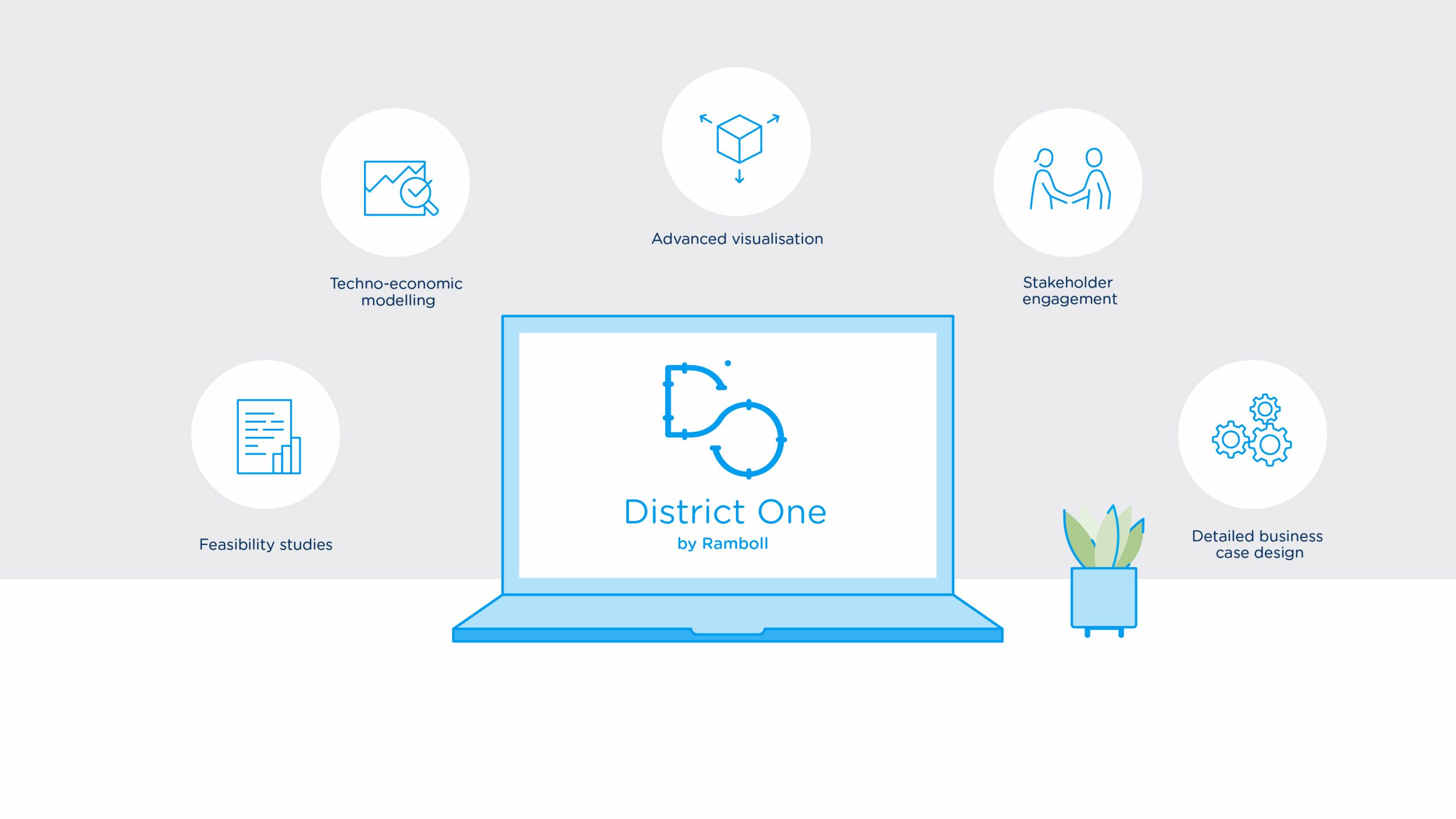Through the UK government’s 2050 Net Zero ambitions, targets are in place to increase district heat networks from 3% today to 20% by 2050, alongside the National Heat Network Zoning Policy, the number and extent of heat networks is expected to increase substantially. To effectively support with the delivery of the planned roll out of district heat networks, Ramboll has developed District One, an AI-optimised heat network design platform.
District One will support landowners, energy companies, developers, and national and local government authorities explore potential heat network routes, using a bespoke spatial machine learning algorithm that rapidly generates intelligent designs. Using local data, District One is designed to assist with the installing of citywide heating and cooling network routes, significantly speeding up their design by identifying the best-suited areas for the installation of heating networks.
The platform has already demonstrated its applicability, with District One having been used to create a combined multi-nodal district energy network consisting of 12 independently operating but connected systems. This case study showed that District One can increase the accuracy of a business case when deployed onto a citywide zonal programme by enabling existing infrastructure plans to be more quickly incorporated into modelling.
Crucially the use of District One, which avoids reliance on the usual ‘rules of thumb’, enabled a far more accurate design and cost estimation of district heating network assets than would be typically expected for master planning projects on this scale.
Commenting on the launch of the District One platform, Guy Milligan, Head of Department – District Energy at Ramboll said, “Heating and cooling networks will have a vital role to play in decarbonising the ways we heat our homes and communities, as well as providing a more affordable alternative to, for instance, individual gas boilers.
“We expect to see a significant expansion of heat networks over the coming years, and are pleased to be able to support this through our development of the District One platform, which provides city-scale mapping, allows for more collaborative discussions between stakeholders and more informed decisions early on in the network planning process.”




